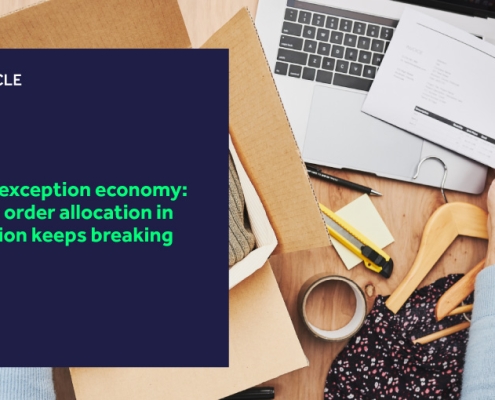Fashion is notoriously unforgiving. One delay in the chain can ripple through design, production and finance. The impact compounds when each department works independently.
This is why ERPs have long been the backbone of fashion operations. They unite all data sources, processes and teams into a common system of record.
While traditional ERPs are great, they’ve had their time in the sun. Now, with the introduction of AI agents, ERPs are no longer passive systems of record but dynamic systems of intelligence.
What is agentic ERP?
Agentic ERPs are essentially the same but supplemented with copilots and autonomous agents. By deploying these agents, data is no longer solely stored and retrieved in isolation; it can be analysed by agents to produce answers, recommended actions and even handle workflows.
The term ‘autonomous agents’ sounds vague and buzzword-y, but there are plenty of reasons to look past that and drill into what they actually are.
Autonomous agents can be created for a variety of purposes, from simply reading and summarising emails to alerting users to problems or automating mundane tasks.
Below, we’ve outlined some of the more prominent agents and what they are used for.
What types of agents are there?
Broadly speaking, agents can be broken down into three key types:
- Retrieval agents that bring forward contextual data when queried by a user.
- Task agents that act on single triggers, like validating a requisition.
- Autonomous agents that handle workflows, such as reconciling accounts.
To give a flavour of what this means for fashion, procurement teams can automate supplier checks, finance teams can close faster, and operations can adapt production schedules based on the latest information available.
This all sounds nice in theory, but what about practical application? Often, we see people rave about the latest cool tech only for it to never really land…
Well, Microsoft has already created agents that are available in D365 Finance & Operations.
Examples of agents already in use
D365 F&O is a leading ERP that you more than likely already know about. What you might not yet know is that all of the below agents are readily available out of the box:
- Time agents automate the process of submitting weekly time and expense entries.
- Expense agents review claims, validate against policy and trigger approvals.
- Supplier communication agents handle vendor queries.
- Account reconciliation agents match ledgers and flag discrepancies.
- Scheduling operations agents plan production sequences within constraints.
Each of these agents connects directly with your ERP data, and with Copilot Studio, can be customised for your specific needs.
Over time, the agents essentially learn your business, logic, data and goals to become bespoke to your organisation. It isn’t a one-size-fits-all deal. It’s unique to you.
Agentic ERP supports procurement, supply chain, finance and merchandising
We’ve talked about agents at a reasonably high level, so next, we’ll get a bit deeper and explain how they can be used to automate manual procurement tasks and administrative bottlenecks.
From a procurement perspective, agents can be deployed to check policies, evaluate supplier data (factoring in ethical sourcing standards, lead time, cost, etc.) and issue purchase orders automatically for raw materials and other essentials.
If a shipment of fabric is delayed, a supplier communication agent can detect it from correspondence, adjust orders and alert production teams.
The above doesn’t just benefit procurement; it also supports supply chain teams and allows them to be proactive, reduce bottlenecks, and maintain launch timelines.
Finance also benefits from continuous updates. Instead of waiting until month end, agents can compare orders, spot discrepancies, and suggest corrections as they happen. Work that once took a week or more can now be done in as little as a day or two.
Additionally, merchandisers and planners can use pricing agents to analyse demand, stock levels and capacity while considering external factors, like material price increases and weather patterns.
These agents then recommend price adjustments, similar to how airlines adjust ticket prices.
Already using ERP?
If your business is already using ERP, there’s little reason not to use agents to supplement your teams. Agentic ERPs reduce manual work, speed up financial closes, automate procurement processes and strengthen supply chain resilience.
The systems of record era is over; the era of systems of intelligence has begun.
Enjoyed reading this? We regularly publish fashion insights, which you can read here.
 https://k3fashionsolutions.com/wp-content/uploads/2025/11/exception-economy-featured.jpg
510
900
Jordan Heal
https://k3fashionsolutions.com/wp-content/uploads/2024/12/K3_Fashion_Solutions_Half-color_RGB.svg
Jordan Heal2025-11-25 09:41:202025-11-25 09:41:20The exception economy: Why order allocation in fashion keeps breaking
https://k3fashionsolutions.com/wp-content/uploads/2025/11/exception-economy-featured.jpg
510
900
Jordan Heal
https://k3fashionsolutions.com/wp-content/uploads/2024/12/K3_Fashion_Solutions_Half-color_RGB.svg
Jordan Heal2025-11-25 09:41:202025-11-25 09:41:20The exception economy: Why order allocation in fashion keeps breaking


